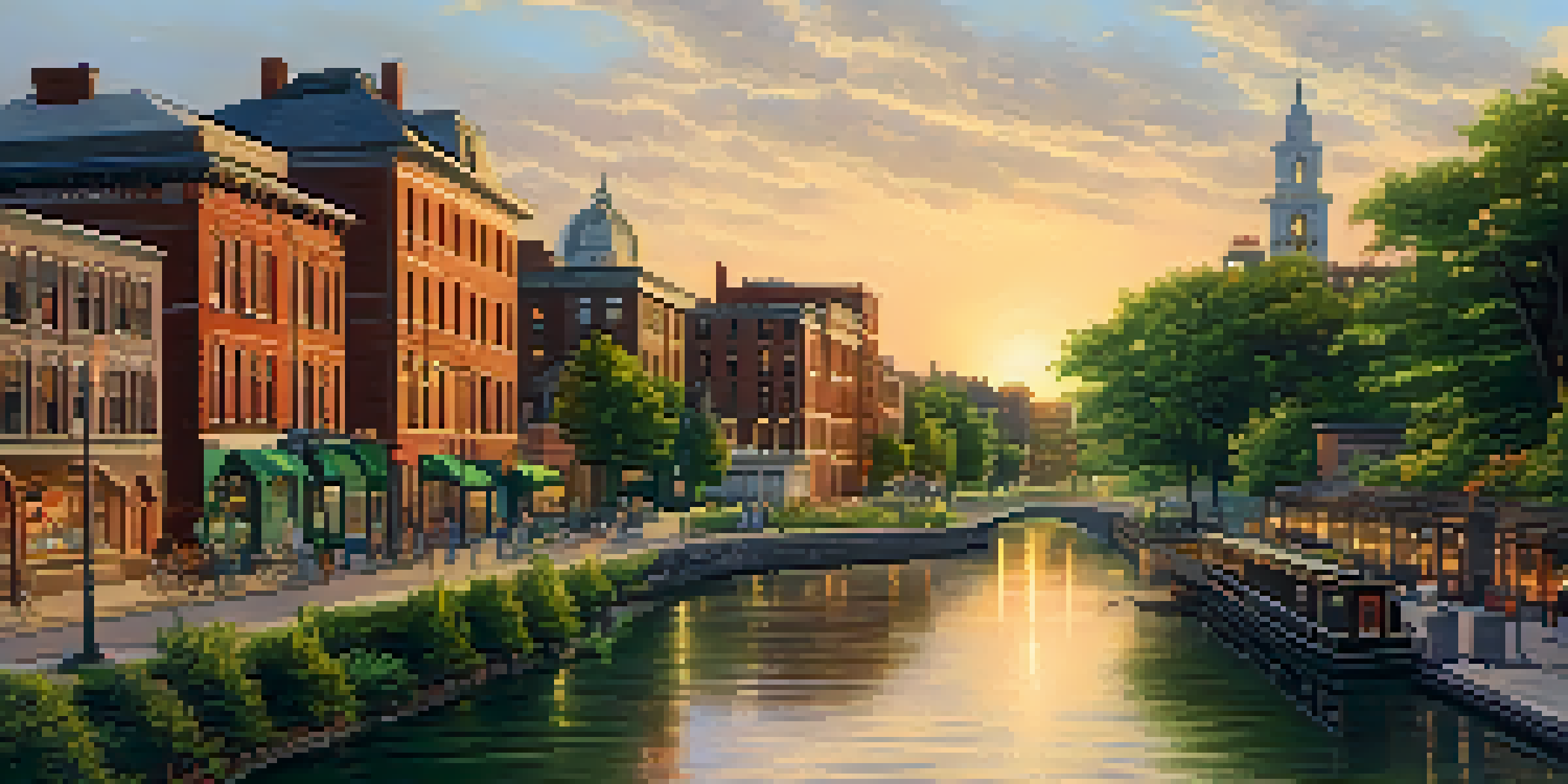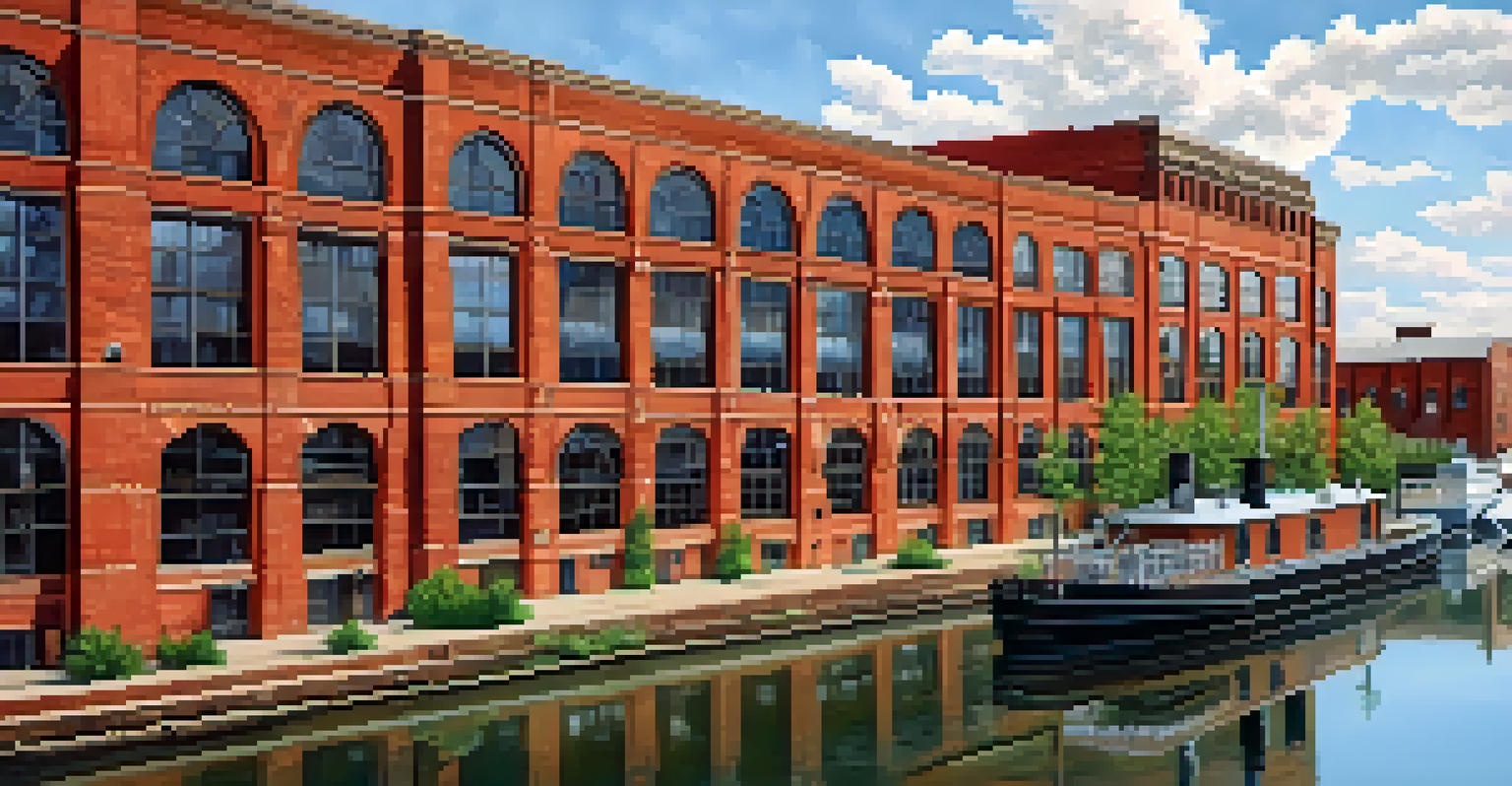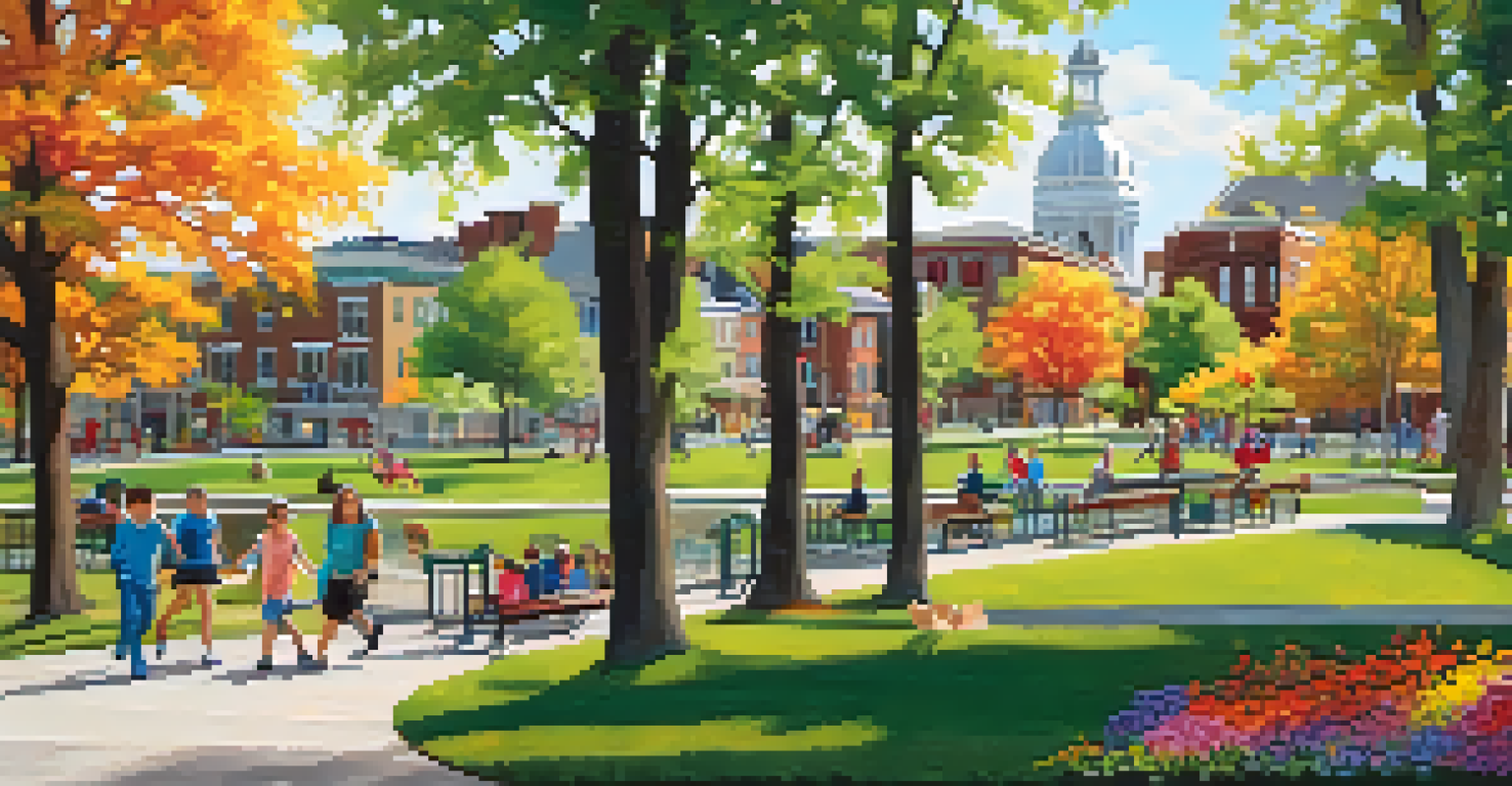The Role of the Erie Canal in Rochester's Architectural Growth

Introduction to the Erie Canal and Rochester's Growth
The Erie Canal, completed in 1825, was a monumental engineering feat that transformed the economic landscape of New York State. Its construction connected the Hudson River to Lake Erie, facilitating trade and travel. For Rochester, this meant a surge in population and commerce, laying the groundwork for significant architectural growth in the region.
Infrastructure is the backbone of society; it shapes our cities and influences our daily lives.
As the canal became a vital shipping route, it attracted businesses and settlers to Rochester, turning it into a bustling hub of activity. The influx of people brought diverse architectural influences, reflecting the city's evolving identity. This period saw the emergence of iconic structures that still define Rochester's skyline today.
In essence, the Erie Canal was not just a waterway; it was the lifeblood of Rochester’s growth. It catalyzed the city's transformation from a small settlement into a thriving urban center, making it a key player in the broader narrative of American industrialization.
Economic Impacts of the Canal on Architectural Development
The economic boost from the Erie Canal had a direct impact on the architectural landscape of Rochester. Increased trade led to the construction of warehouses, factories, and commercial buildings, all designed to accommodate the growing economy. These structures often featured the robust, utilitarian design typical of the era, showcasing the city’s industrial strength.

Moreover, as businesses flourished, affluent residents began to invest in more elaborate homes, leading to the rise of architectural styles like Italianate and Romanesque. These styles reflected the prosperity of the time, with intricate details and grand designs that still attract admiration today. The contrast between commercial and residential architecture illustrated the dynamic nature of the city’s growth.
Erie Canal Fueled Rochester's Growth
The Erie Canal transformed Rochester from a small settlement into a thriving urban center by boosting trade and attracting businesses.
Thus, the Erie Canal was not just an economic engine; it shaped the very fabric of Rochester's architectural identity. The wealth generated by trade led to a visual representation of success, evident in the diverse buildings that dot the city.
Architectural Styles Influenced by Canal Trade
Rochester's architectural landscape became a melting pot of styles, largely influenced by the wealth generated from canal trade. The influx of goods and people introduced various architectural trends from across the country and even Europe. This exchange of ideas fostered a unique blend of styles that characterized Rochester’s growth, from Greek Revival to Victorian.
The past informs the present, and architecture is a living testament to that truth.
For example, the rise of the Victorian style in the mid-1800s coincided with the city's booming economy, leading to the construction of ornate homes and public buildings. These structures often featured elaborate woodwork, vibrant colors, and asymmetrical designs, symbolizing the prosperity brought by the canal. They reflected not only wealth but also a growing sense of community identity.
In this way, the Erie Canal facilitated more than just economic growth; it also served as a conduit for cultural exchange. The architectural diversity that emerged was a testament to Rochester's evolving character, shaped by the opportunities presented by the canal.
The Role of Industry in Shaping Rochester's Architecture
With the Erie Canal as a catalyst, Rochester became a center for various industries, including flour milling and manufacturing. This industrial boom necessitated the construction of factories and warehouses, which in turn influenced architectural design. The need for functionality often meant buildings were constructed with practical materials like brick and stone, showcasing a different aesthetic than residential architecture.
Additionally, the architecture of industrial buildings often reflected the technological advancements of the time. Innovations such as large windows for natural light and open floor plans became prominent features. These designs not only catered to the needs of industry but also laid the groundwork for adaptive reuse in later years, as many of these structures were repurposed into lofts and commercial spaces.
Diverse Architecture Reflects Prosperity
The wealth generated from canal trade led to the emergence of various architectural styles, showcasing the city's economic success and cultural exchange.
Thus, the industrial landscape created by the Erie Canal's impact was a significant factor in Rochester's architectural narrative. The interplay between industry and architecture highlights how economic needs can shape a city’s visual identity.
Preservation Efforts for Historical Architecture
As Rochester's architectural landscape evolved, so did the need to preserve its historical structures. Many buildings that were once vital to the city’s growth faced the threat of demolition as urban development continued. Recognizing their cultural and historical significance, preservation efforts began to gain momentum in the late 20th century.
Organizations dedicated to preserving Rochester's architectural heritage emerged, advocating for the protection of key structures. Their efforts have led to the restoration and adaptive reuse of many historic buildings, allowing them to serve modern purposes while retaining their historical charm. This blend of old and new adds depth to the city’s character, showcasing its rich history.
In this context, the Erie Canal’s legacy is not just about the structures built during its heyday but also about the ongoing commitment to honor that history. Preservation efforts remind us of the importance of architectural heritage in understanding a city’s past and shaping its future.
The Erie Canal's Legacy in Modern Rochester
Today, the legacy of the Erie Canal is still evident in Rochester's architectural landscape. Many historic buildings have been preserved and repurposed, serving as reminders of the city’s vibrant past. The blend of old and new architecture creates a unique visual narrative that tells the story of Rochester’s evolution over the years.
Moreover, the revitalization of areas along the canal has transformed them into vibrant spaces for recreation and community engagement. Parks, trails, and public spaces have been developed, enhancing the canal’s role as a social and cultural hub. This modern use of the canal reflects its historical importance while adapting to contemporary needs.
Preservation of Historical Structures
Efforts to preserve Rochester's historical architecture highlight the importance of honoring the city's past while adapting to modern needs.
Ultimately, the Erie Canal remains a fundamental part of Rochester's identity. Its influence on architecture and urban development continues to shape the city's character, ensuring that the past remains a vital part of its future.
Conclusion: The Enduring Impact of the Erie Canal
In conclusion, the Erie Canal played a pivotal role in Rochester's architectural growth, influencing everything from economic development to cultural exchange. Its construction marked the beginning of a new era for the city, paving the way for diverse architectural styles and industrial expansion. The buildings that arose during this time tell a story of ambition, innovation, and community.
As we look around Rochester today, we see the lasting impact of the Erie Canal not just in the structures that define the skyline, but also in the spirit of resilience and creativity that characterizes the city. Preservation efforts ensure that these stories are not forgotten but celebrated as part of Rochester’s collective memory.

The legacy of the Erie Canal is a testament to how infrastructure can shape a city’s identity. Its influence on Rochester’s architecture is a reminder of the interconnectedness of history, culture, and community, inviting us to appreciate the past as we build for the future.